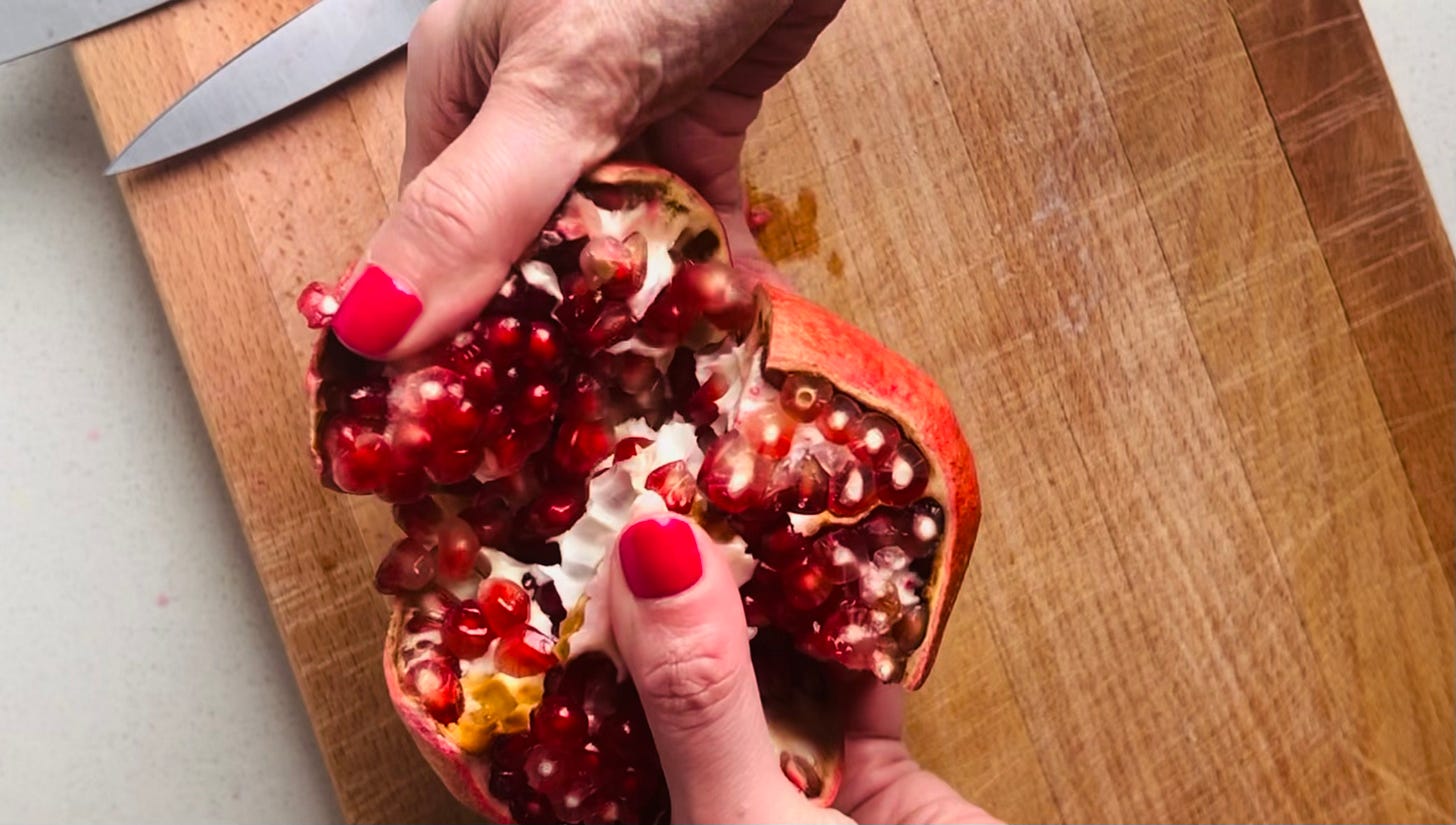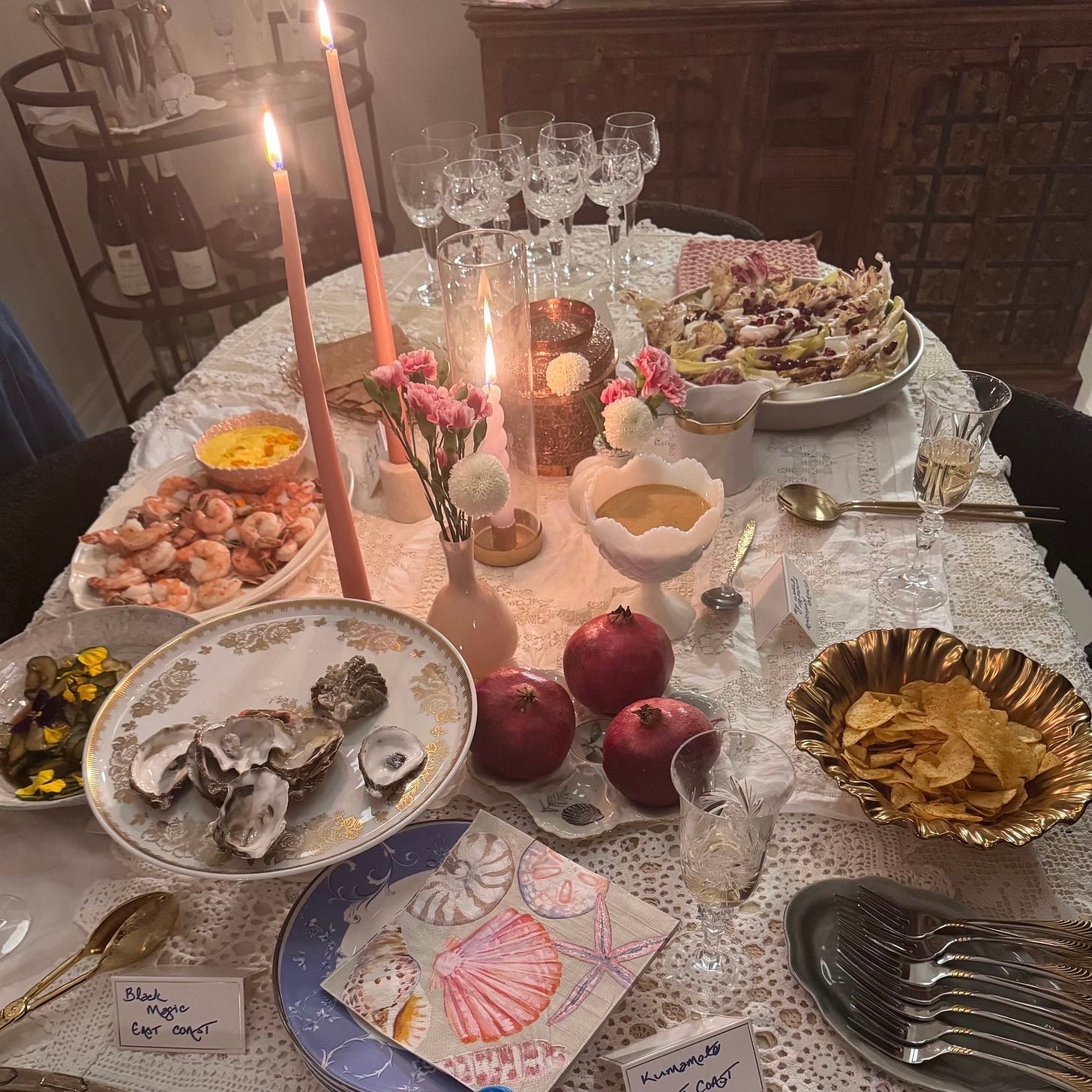There is no exact measurement for the way a meal comes together. Some things are written, recorded, passed down in precise teaspoons and cups. But others live in my hands, in my memory, in the way I instinctively know when something is ready.
I don’t need a recipe to know when basmati grains have swelled and are ready—I know by their scent, by the way a grain breaks between my fingers. I know how much haldi (turmeric) to add to a pot of dal because I’ve seen my Ami doing it all my life, even though she does not cook anymore. But that lives in my memory. Andaza is that certainty, that knowing.
Andaza is more than just cooking—it’s how I bring a meal to the table, how I create a space that feels warm and lived-in, how small gestures become traditions. It’s the way I fold a napkin the same way Mader, my paternal grandmother did, the way I reach for Baba’s (my father) crystal glasses when friends come over, the way I know a meal is complete not because of what’s on the table, but because of the people gathered around it.
Here are 7 ways to bring andaza into your kitchen, your table, your everyday meals:
1) Taste as You Go
Because no dish can be perfect in a single step. Andaza is the pause between stirring and tasting, the knowing when something needs more salt, more chilli, more time. Trust your senses before the written recipe.
2) Let the Ingredients Lead
Start with what you have. Fresh herbs (coriander, my favourite) on the counter, ripe fruit (I am waiting for the first strawberries of the season!) from the market, a handful of spices you just bought (my Turkish pul biber from Kensington Market) that feel right. Recipes can wait—what’s in front of you is enough to start baking and cooking.
3) Cook by Touch
Cooking begins in your fingertips. The way dough softens and yields as you knead chapati. The way endive leaves are slicked by vinaigrette as you toss them by hand. The slow, deliberate work of freeing pomegranate arils, one by one—no wooden spoon shortcuts, just patience. Let your hands tell you how it feels.
4) Trust the Look, the Sound, the Scent
The intense, sweet scent of garlic, just before it darkens. The bloom of saffron under an ice cube, its color deepening. The shift in sound when a simmer turns to a boil. Some things don’t need timers. Your senses will tell you when it’s ready.
5) Set the Table Like You Cook
A lace runner from the market in Karachi, linen napkins from the Antique Market in Hamilton where I spent many hours with a friend who once felt like a sister. Crystal glasses I inherited from Baba, my father, set alongside an antique dish that has held decades of meals. A table should feel layered with history and stories, like the meal itself, like the hands that prepared it.
If you enjoy my writing, and it inspired you, I would be so grateful if you hit that ❤️ or share my post—it helps spread the work about my craft.
6) Honor What Feels Right
A meal doesn’t have to be elaborate. A simple pot of dal, bread from the farmer’s market, dark chocolate and dates. What matters isn’t formality, but love and care. Andaza is knowing when more is needed—and when what you have is already enough.
7) Cook Without Fear
Some traditions are inherited, others we create. A missing ingredient doesn’t mean you can’t make the dish. You adjust, substitute, make it work. No recipe is rigid—andaza is about trusting that you know what to do.













